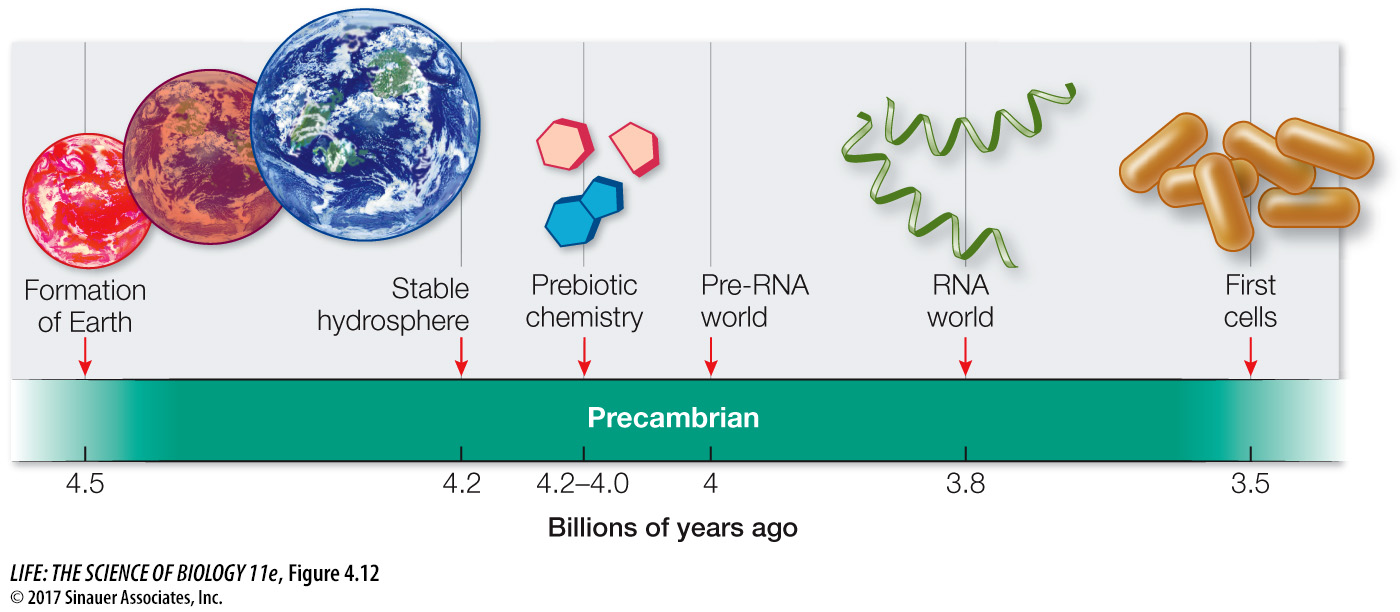Some ancient cells left a fossil imprint
In the 1990s scientists made a rare find: a formation of ancient rocks in Australia that had remained relatively unchanged since the rocks first formed 3.5 billion years ago. In one of these rock samples, geologist J. William Schopf of the University of California, Los Angeles, saw chains and clumps of what looked tantalizingly like contemporary cyanobacteria, or “blue-green” bacteria (Figure 4.11). Cyanobacteria are believed to have been among the first organisms because they can perform photosynthesis, converting CO2 and water into carbohydrates. Schopf needed to prove that the chains were once alive, not just the results of simple chemical reactions. He and his colleagues looked for chemical evidence of photosynthesis in the rock samples.

Figure 4.11 The Earliest Cells? This fossil from Western Australia is 3.5 billion years old. Its form is similar to that of modern filamentous cyanobacteria (inset).
The use of carbon dioxide in photosynthesis is a hallmark of life and leaves a unique chemical signature—a specific ratio of carbon isotopes (13C:12C) in the resulting carbohydrates. Schopf showed that the Australian material had this isotope signature. Furthermore, microscopic examination of the chains revealed internal substructures that are characteristic of living systems and were not likely to be the result of simple chemical reactions. Schopf’s evidence suggests that the Australian sample is indeed the remains of a truly ancient living organism.
In 2011 a different team of scientists, working about 32 km from Schopf’s discovery, found similar-looking microfossil structures in sandstone rocks that were about 3.4 billion years old. In this case, a chemical analysis of the rocks indicated that these cells used sulfur instead of oxygen in the series of cellular reactions that release chemical energy.
Taking geological, chemical, and biological evidence into account, it is plausible that it took about 500 million to a billion years from the formation of Earth until the appearance of the first cells (Figure 4.12). Life has been cellular ever since. In the next chapter we will begin our study of cell structure and function.

Figure 4.12 The Origin of Life This highly simplified time line gives a sense of the major events that culminated in the origin of life more than 3.5 billion years ago.

